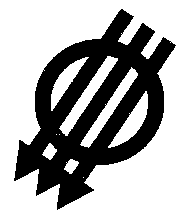“Reich unity after three hundred years!” A 1933 article by trade-union leader Franz Joseph Furtwängler, extolling the achievements and possibilities of the Hitler government

In the endless debate over whether or not National Socialism can be considered a form of “real socialism,” the common narrative about the fate of Germany’s trade-unions in 1933 is frequently cited as evidence to the contrary. On 1 May 1933, the narrative goes, May Day was celebrated as a paid national holiday for the first time, with labour unions voluntarily participating in nationwide festivities; the very next day, however, the Hitler government’s true face was revealed, and the SA and police were sent out to forcibly crush the unions and throw their members into prison. While on a general level this narrative is essentially correct, it is also oversimplified: only certain unions were targeted on 2 May, only specific functionaries were taken into “protective custody,” union assets and memberships were expropriated (for incorporation into the German Labour Front) rather than the entire labour apparatus being “crushed” or dismantled, etc. What is most commonly omitted from the narrative is the fact that those trade-unions targeted (the ‘free’ or Social-Democratic unions) had already been actively collaborating with the Hitler government for some time. This was especially true of the General German Trade-Union Federation (Allgemeiner Deutscher Gewerkschaftsbund, ADGB), which with a membership of 4 million and a paid staff of 200,000 constituted the largest and most significant trade-union organization in Germany. Although linked to the Social-Democratic Party (Sozialdemokratische Partei Deutschlands, SPD) by a variety of formal and informal ties, the ADGB was technically independent of the SPD and had been since 1919, possessing its own internal culture – heavily dominated by Social-Democracy’s reformist (right-leaning) tendency – and with a segment of its leadership even comprising a key faction within Social-Democracy’s neorevisionist (nationalist or ‘far right’) wing. Influenced by these qualities, as well as by Social-Democracy’s declining political influence and the increasing likelihood of a right-wing authoritarian government, the ADGB in 1932 had begun to further distance itself from the SPD and to establish surreptitious negotiations with the Papen and Schleicher governments, hoping in this way to protect its members and the rights won for them since 1918. These negotiations continued even after Hitler took power, with the ADGB leadership going so far as to declare itself “at the service of the new state” and actively involving itself in deliberations over the charter for a corporatist social structure. This conciliatory attitude was reflected in official trade-union publications like Die Arbeit and the Gewerkschafts-Zeitung, which adopted an increasingly nationalistic tone as 1933 wore on. The article translated below provides a rather striking example of this shift in attitude. Written by Franz Joseph Furtwängler, a member of the ADGB’s executive leadership, it is openly and remarkably adulatory towards the Hitler regime, with Furtwängler applauding the political order brought to Germany (including the dismantling of the party-system!) by the NSDAP and offering the plaintive hope that the government would prove equally successful in the socio-economic sphere, while still recognizing the value and importance of the trade-union movement. Furtwängler, incidentally, was to be one of those arrested on 2 May, and would later involve himself in resistance activities; whether the NS government could have retained his loyalty and support by way of different actions is an interesting hypothetical.
Reich Unity After Three Hundred Years!
By F.J. Furtwängler1
First published 22 April, 1933 in trade-union journal
Gewerkschafts-Zeitung vol. 43, no.16

I.
The fundamental, profound, and – we hope – pioneering beginnings of a transformation in the body politic and in the structure of the Reich have emerged in recent weeks.
Let us recall how, at the end of the previous year, under the general interregnum of Chancellor von Schleicher, tentative efforts were made to find organically grown and consolidated forces for the shaping of state and economy, for resolving our intolerable situation, outside of the traditional party-factions conditioned by the circumstances of the Bismarckian Reich.2 Let us also recall the universal opposition of the [parliamentary] factional prelates, one of whom, the prominent Herr Ludwig Kaas,3 cast a witty remark among the electoral throng at the time about “ideological parties”4 being absolutely beneficial to the German character and hence needing to be preserved, because the trading license of their “worldview” offered the guarantee, so to speak, that they would solve contemporary problems for the benefit of the German Volk.
In fact, for years the parliamentary parties have prolonged life for themselves by forgoing their exercise of power in favor of the government’s expansive manipulation of the emergency clauses of the constitution, and finally by taking advantage of Communist ‘blocking majorities’ in parliament, irrespective of their ‘worldview’ – something utterly unthinkable in countries with an organic rather than a mechanical democracy. At the same time, the power and authority of the Reich President inevitably expanded until, in the eyes of the people, he acquired the image of an elective Kaiser.
Officially, of course, we remained “upon the grounds of the constitution,” so that by the end only the less erudite among the Volk felt the changing times in their bones, so to speak, much like a rheumatic feels the change in the weather, while the responsible ideological political administrations were neither conscious of the change nor understood what needed to be done. Continue reading





